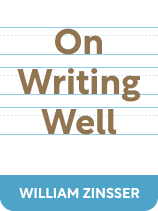

This article is an excerpt from the Shortform book guide to "On Writing Well" by William Zinsser. Shortform has the world's best summaries and analyses of books you should be reading.
Like this article? Sign up for a free trial here .
Do you write about science and technology? How can you make your writing sound less robotic?
When people write about science and technology, they tend to lack humanity, making the piece too boring and matter-of-fact. To make your technical writing more interesting, focus on humanity first and incorporate facts and statistics only if they add to the story.
Here’s how to make your technical writing more interesting.
Science and Technology Writing
Science and technology writing is a nonfiction genre that centers on technical subjects. In his book On Writing Well, William Zinsser argues that science and technical writers often lack humanity in their pieces, resulting in an overly-logical and impersonal article. To avoid this, write like yourself, not a robot. Imagine how you’d explain this subject to a friend or family member in a casual conversation, then translate that onto paper.
When you write about science and technology, you should focus on humanity first and incorporate extra information later if it really adds anything to your story. People don’t want to read through lots of statistics, numbers, and studies even when reading about science and technology. That doesn’t mean you can’t include statistics or studies in your writing, but don’t overdo it—otherwise your article will quickly sound impersonal.
| Incorporate Humanity Into Your Writing by Telling a Story About Real People To incorporate humanity into science and technology writing, tell a story about real people. Many science writers think that explaining the widespread effects of an issue will persuade their audience of an issue’s importance. But this approach relies on the abstract principles of the problem. Instead, be specific by discussing a real person or group and how this research affects them. Your reader can relate to this person and understand the effects through this lens. For example, Michael Lewis uses this approach in many of his books—he blends technical information and narrative, thus making his research more digestible. In Flash Boys, he discusses the complexities of the US stock market and high-frequency trading through the story of an individual trader who figured out the nuances of these unfair trading techniques. Through this trader’s narrative, the reader learns about the information on a more personal level. |

———End of Preview———
Like what you just read? Read the rest of the world's best book summary and analysis of William Zinsser's "On Writing Well" at Shortform .
Here's what you'll find in our full On Writing Well summary :
- A back-to-basics approach to the craft of writing
- How to practice simple, clear, and engaging writing—even if you're not a writer
- How to effectively put your ideas into words






